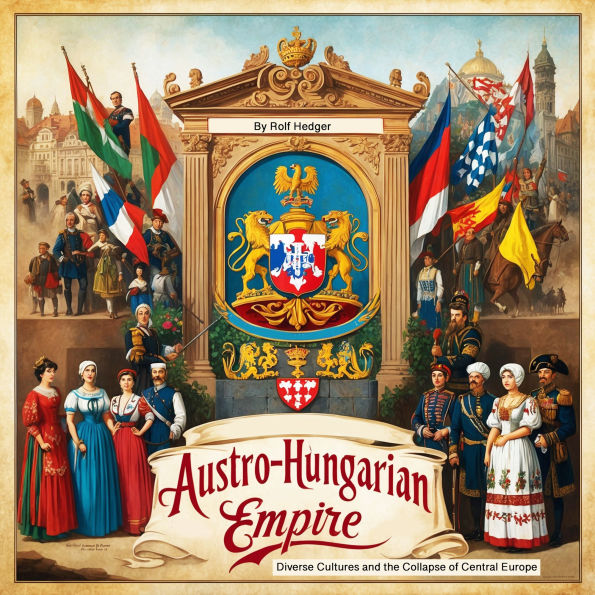This audiobook is narrated by a digital voice.
The Austro-Hungarian Empire remains one of the most complex and fascinating political entities in European history. Formed in 1867 as a dual monarchy under the rule of the Habsburg dynasty, it was both a formidable power and a fragile mosaic of cultures, languages, and national aspirations. Stretching from the Alps to the Carpathians and the Adriatic to the Danube, the empire was home to more than a dozen major ethnic groups-each with its own customs, history, and ambitions. It was a realm where German, Hungarian, Czech, Slovak, Polish, Ruthenian, Romanian, Croatian, Serbian, Slovenian, Italian, and Yiddish voices coexisted-sometimes peacefully, sometimes in bitter rivalry.
This book seeks to explore the inner workings of this imperial experiment: how it functioned, how its people lived together, and why, ultimately, it could not endure the turbulence of the early twentieth century. More than just a historical overview, it is an examination of cultural plurality and political fragility, and how the tension between unity and diversity shaped both the empire's grandeur and its unraveling.
The Austro-Hungarian Empire stood as a unique model of governance, balancing centralized authority with regional autonomy. Its institutions were sophisticated but often inefficient; its bureaucracy capable yet burdened by the demands of multilingual communication and nationalist pressures. In many ways, it was a precursor to the European Union-an attempt to unify diverse peoples under shared interests while preserving local identities.
This audiobook is narrated by a digital voice.
The Austro-Hungarian Empire remains one of the most complex and fascinating political entities in European history. Formed in 1867 as a dual monarchy under the rule of the Habsburg dynasty, it was both a formidable power and a fragile mosaic of cultures, languages, and national aspirations. Stretching from the Alps to the Carpathians and the Adriatic to the Danube, the empire was home to more than a dozen major ethnic groups-each with its own customs, history, and ambitions. It was a realm where German, Hungarian, Czech, Slovak, Polish, Ruthenian, Romanian, Croatian, Serbian, Slovenian, Italian, and Yiddish voices coexisted-sometimes peacefully, sometimes in bitter rivalry.
This book seeks to explore the inner workings of this imperial experiment: how it functioned, how its people lived together, and why, ultimately, it could not endure the turbulence of the early twentieth century. More than just a historical overview, it is an examination of cultural plurality and political fragility, and how the tension between unity and diversity shaped both the empire's grandeur and its unraveling.
The Austro-Hungarian Empire stood as a unique model of governance, balancing centralized authority with regional autonomy. Its institutions were sophisticated but often inefficient; its bureaucracy capable yet burdened by the demands of multilingual communication and nationalist pressures. In many ways, it was a precursor to the European Union-an attempt to unify diverse peoples under shared interests while preserving local identities.

Austro-Hungarian Empire: Diverse Cultures and the Collapse of Central Europe

Austro-Hungarian Empire: Diverse Cultures and the Collapse of Central Europe
FREE
with a B&N Audiobooks Subscription

Product Details
| BN ID: | 2940195706890 |
|---|---|
| Publisher: | Saaa Pub LLC |
| Publication date: | 04/23/2025 |
| Edition description: | Unabridged |
Videos

